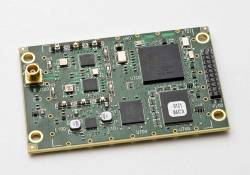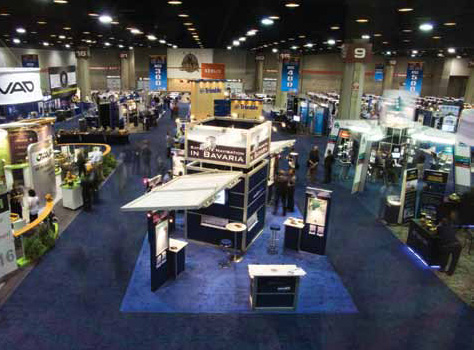 NovAtel OEMStar
NovAtel OEMStarNovAtel Inc. rolled out a series of new products and a firmware upgrade at the Institute of Navigation’s ION GNSS 2009 conference held September 22-25 in Savannah, Georgia, USA.
The Calgary, Alberta, Canada–based GNSS manufacturer announced the launch of their new single-frequency GNSS receiver, OEMStar. The low-cost, 14-channel, L1 receiver measures 46 x 71 millimeters and consumes just 750 milliwatts of power when tracking both GPS and GLONASS signals.
NovAtel Inc. rolled out a series of new products and a firmware upgrade at the Institute of Navigation’s ION GNSS 2009 conference held September 22-25 in Savannah, Georgia, USA.
The Calgary, Alberta, Canada–based GNSS manufacturer announced the launch of their new single-frequency GNSS receiver, OEMStar. The low-cost, 14-channel, L1 receiver measures 46 x 71 millimeters and consumes just 750 milliwatts of power when tracking both GPS and GLONASS signals.
Speaking about the OEMStar, which begins shipping in November 2009. Graham Purves, NovAtel’s vice-president of sales and marketing, said, “There is definitely a void in the marketplace at this price/performance level. We believe this is the lowest cost GLONASS capable receiver out there.”
NovAtel also introduced the FlexPak-G2 enclosure, a compact unit designed for easy integration that supports NovAtel’s OEMV-1, OEMV-1G and OEMV-2 line of high-precision GNSS receivers. Field-upgradable, the FlexPak-G2 provides meter- to centimeter-level positioning, depending on the receiver card selected.
Independent I/O connectors and USB ports simplify cabling for application developers. Standardized DB-9 connectors allow low-cost cables to be quickly and easily built and lower the overall system weight. The FlexPak-G2 will also begin shipping to customers in November.
The company also announced the release of Version 3.700 firmware for its OEMV family of GNSS precision receivers, which includes enhancements to NovAtel’s single frequency RTK positioning solution, RT-2 L1TE, and to the company’s ALIGN heading technology.
To increase solution availability and accelerate ambiguity resolution, RT-2 L1TE was upgraded to receive Satellite Based Augmentation System (SBAS) measurements as well as GPS and GLONASS signals. SBAS access is beneficial for customers working in foliated environments, where optimal satellite coverage is not always possible.
Version 3.700 also enables ALIGN to output both master and remote positions at both receiver ends through new message logs, as well as provide an RTK position along with heading at the remote receiver.





